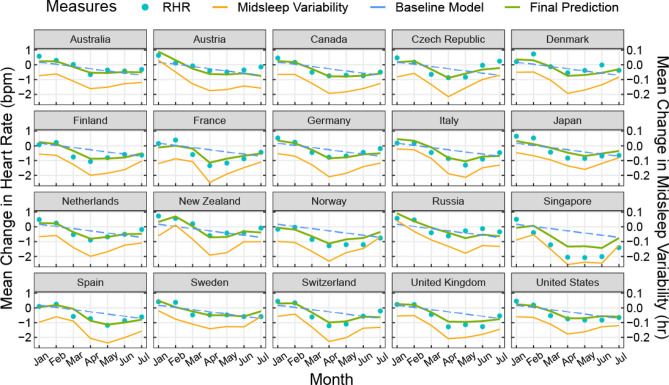Figure 4.
Prediction of changes in resting heart rate by changes in sleep patterns. Plots showing final fitted models (green curves) across 20 countries predicting changes in resting heart rate (RHR) (2020–2019) using changes in midsleep time, changes in midsleep variability, and sleep duration in 2020 as time-varying predictors in the same model. Observed mean differences between 2020 and 2019 (blue dots) and predictions without sleep variability in the model (blue dashed line) are also shown for comparison. Sleep variability was found to be the strongest predictor of resting heart rate and is shown here in orange solid line for visualization purposes.

